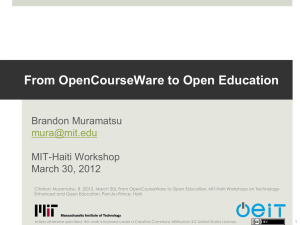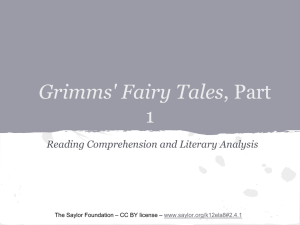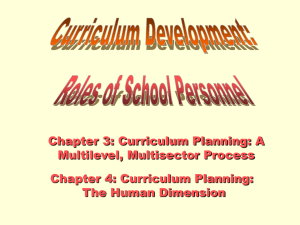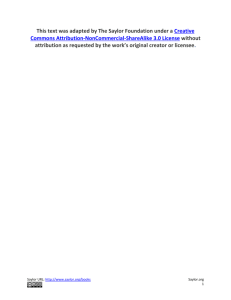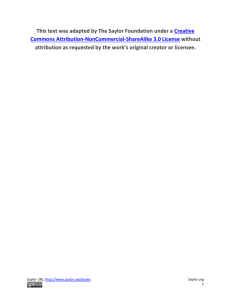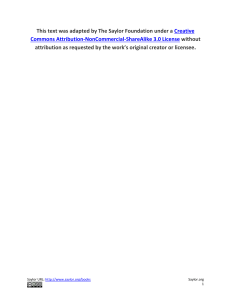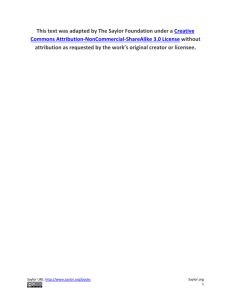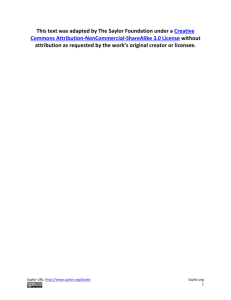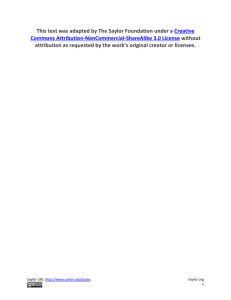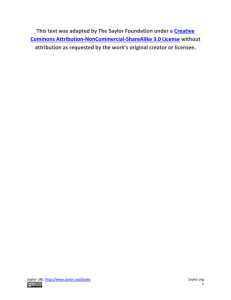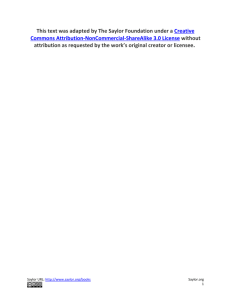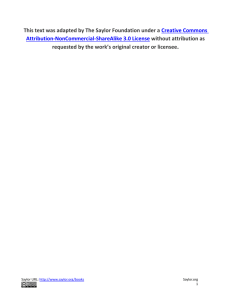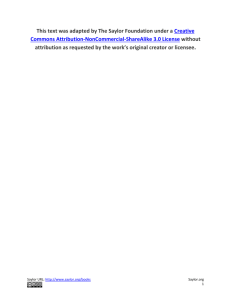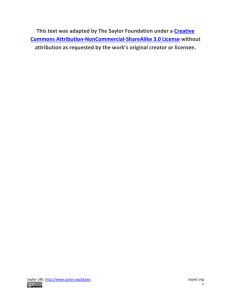First grade classroom
advertisement
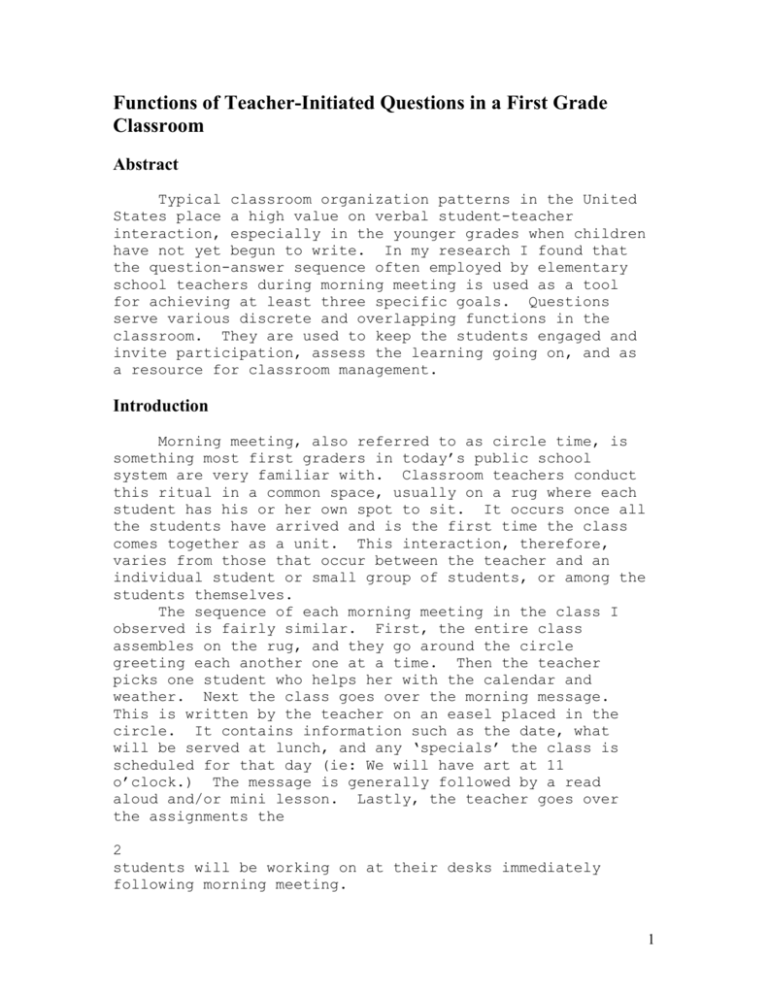
Functions of Teacher-Initiated Questions in a First Grade
Classroom
Abstract
Typical classroom organization patterns in the United
States place a high value on verbal student-teacher
interaction, especially in the younger grades when children
have not yet begun to write. In my research I found that
the question-answer sequence often employed by elementary
school teachers during morning meeting is used as a tool
for achieving at least three specific goals. Questions
serve various discrete and overlapping functions in the
classroom. They are used to keep the students engaged and
invite participation, assess the learning going on, and as
a resource for classroom management.
Introduction
Morning meeting, also referred to as circle time, is
something most first graders in today’s public school
system are very familiar with. Classroom teachers conduct
this ritual in a common space, usually on a rug where each
student has his or her own spot to sit. It occurs once all
the students have arrived and is the first time the class
comes together as a unit. This interaction, therefore,
varies from those that occur between the teacher and an
individual student or small group of students, or among the
students themselves.
The sequence of each morning meeting in the class I
observed is fairly similar. First, the entire class
assembles on the rug, and they go around the circle
greeting each another one at a time. Then the teacher
picks one student who helps her with the calendar and
weather. Next the class goes over the morning message.
This is written by the teacher on an easel placed in the
circle. It contains information such as the date, what
will be served at lunch, and any ‘specials’ the class is
scheduled for that day (ie: We will have art at 11
o’clock.) The message is generally followed by a read
aloud and/or mini lesson. Lastly, the teacher goes over
the assignments the
2
students will be working on at their desks immediately
following morning meeting.
1
During this time, the teacher must be sure that the
students stay engaged and focused on what she is doing.
She also needs to check for understanding and keep the
behavior of the students in line so as to not disrupt the
learning taking place. “We, at the beginning of the year,”
explains Lori Saylor, the teacher whose class I conducted
my fieldwork in, “set up a routine, and the rules of the
routine were set up then.” After hearing these rules,
students are expected to conduct themselves in a certain
manner. Morning meeting is the site where students first
learn the rules for answering questions asked by the
teacher.
Methods
Data collection methods for this study included
ethnographic observation, interviewing of the classroom
teacher, and audio-recording three morning meetings, each
between thirty-five and forty minutes long. The fieldwork
was completed in a first grade classroom at the Hillcrest
Elementary School in Turner’s Falls, Massachusetts in
November, 2006. Several segments from these recordings
were transcribed for the purpose of this paper.
Data
Types of Questions
While examining my data, I noticed that Ms. Saylor
frequently asked her pupils questions that fell into one of
two categories, as defined by Elinor Ochs in her book Culture
and Language Development. These categories include test
questions and sentence completion frames. While questions
are usually asked in order to obtain unknown information,
or receive clarification or further elaboration on a topic,
they have quite different functions in the classroom. The
teacher
3
already knows the answers to the questions she poses to her
students. Instead she uses them to invite the students to
participate during morning meeting, to assess the learning
that is happening, and, finally, as a means of controlling
her class.
Because the teacher is not collecting new information
from the students, these functions may not be readily
apparent to an outsider. However, they seem normal to most
2
middle-class Anglo-American children and adults because
similar question/answer sequences are used at home. As
Ochs explains, “The procedures characteristic of teachers
in Western classrooms are extensions of practices of
caregivers in Wester middle-class households” (204). It is
also important to note that these three functions often
overlap, meaning that when the teacher asks a question it
can serve more then one purpose simultaneously.
Test questions can be open or close-ended. The
teacher determines if just one student or the whole class
will answer. If she decides the latter, she picks the
student. During morning meeting, this is usually a child
who is raising his/her hand, ready to volunteer an answer.
Sentence completion frames are like questions in that “The
instructor provides the first part and the student the
second part of the idea.” They resemble an oral cloze
procedure activity in which students must fill in the
blank. The teacher will start a sentence and have the
students finish her thought, “elicit[ing]... [the] missing
information... through prosodic means” (204). In most of
the examples of sentence completion tasks, the teacher
elongates the last sound of the last word she says,
prompting her pupils to finish the sentence. In most
examples of sentence completion frames in my data, I found
that the whole class, or most of students present, answered
in a chorus. The teacher did not call on individual
students for answers to these questions. However, she did
use sentence completion frames when talking to students
one-on-one as well.
4
Examples of Test Questions
1 & 2.)
1.)Ms. Saylor:
Do you think this is
nonfiction or fiction?
Class:
Nonfiction
2.)Ms. Saylor:
Why do you think it’s
no:::nfiction, that it’s real?
Ocean?
Ocean:
That ( ) that people can
really do this
Ms. Saylor:
That people can really do this.
3.)
Ms. Saylor:
Class:
Do you think that’s fair to Devin?
No:::
3
4.)
Ms. Saylor:
What’s missing out of today?
{Written on message board as to_ay}
Ocean, what’s missing?
Ocean:
d
Ms. Saylor:
A ‘d’
5.)
Ms. Saylor:
What is a menu? Courtanie.
Courtanie:
It’s like food that you eat. And
it’s like on a paper that you can say
to the person
Ms. Saylor:
So you get a paper; there’s food
on it that you can eat, and you say it
the person.
Examples of Sentence Completion Frames:
5.)
Ms. Saylor:
Six words. ( ) I only gave you
three. You need to think of the rest
in your:::
Class:
Head
6.)
Ms. Saylor:
the
Class:
7-9.)
You can turn it over and do it on
Other side!
7.)Ms. Saylor:
Now I remember yesterday
( )one of the things we talked
about is everybody needing to do
their work, and it got very:
Class:
Lou:::d
8.)Ms. Saylor:
Were people able to do their
work?
Class:
No::::
9.)Ms. Saylor:
A:::nd is that being kind to
the kids?
Class:
No:::::::
Ms. Saylor:
Because if you’re being loud
and they can’t do their work it’s
not fair, and they can’t do their
work and maybe they have to finish
it up at choice time ( ) or
another time.
5
Structure of Question Asking
4
After examining the examples given above, one begins
to notice a pattern in the teacher’s question asking
routine. She does not simply ask a question and wait for a
response. The procedure is actually quite complex, and it
is one that middle-class Anglo-American children are
accustomed to because it is specific to the culture in
which they grew up.
The question/answer sequence begins with a teacherinitiated question. The response comes from either one
student or the whole class in a chorus. If only one
student is meant to answer the question, the teacher is the
person who designates him or her. Sometimes, but not
always, the teacher asks the question twice, rewording it
the second time around. She only does this with test
questions. This rephrasing of the question can come either
before or after she has called on a student to answer. In
example 4, Ms. Saylor asks a question to the class, calls
on Ocean, and then repeats the question for him.
After getting a response, the teacher sometimes, but
again, not always, repeats the answer she received (as
denoted examples 2, 4, and 5). The teacher may do this to
be sure everyone heard the response, but it also functions
as a kind of reinforcement. By repeating back the answer a
child has given her, it validates his or her response. Ms.
Saylor, for instance, does something particularly
interesting in example five. When repeating Courtanie’s
response, she does not substitute any new terms such as
waiter. In doing so, she certifies Courtanie’s response,
thereby encouraging others to participate and Courtanie to
continue participating in the future.
The list below breaks the question-asking sequence
into five steps. Those in parenthesis do not necessarily
occur in every instance of the question/answer classroom
routine. As states, steps two and three can be
interchanged, and step three (and usually step five) is
more likely occur
6
with test questions. Sometimes the teacher goes through
all five steps; sometimes only steps 1 and 4 are deemed
necessary.
Basic Question/Answer Sequence:
1. Teacher asks question
(2. Teacher repeats question)
(3. Teacher calls on student)
4. Whole class or individual student responds
5
(5. Teacher repeats back answer she recieves)
For this sequences to work successfully, the students
must understand the steps on some level. First, they must
be aware of when it is acceptable to call out an answer
without being called on by the teacher and when to raise
their hand before speaking. Because the examples above all
flow smoothly, we assume that structuring a lesson this way
is normal. It is more apparent that the students are, in
general, able to recognize the patterns that underlie the
teacher/student interactions during morning meeting,
therefore, when they stray from the norm.
In the following example, the teacher is adding the
number fifty-five to a numberline that starts with one.
The teacher adds the next consecutive number every day
during morning meeting as a way of not only keeping track
of the amount of days the students have been at school but
practicing patterns, counting, and basic mathematic
principles with the children. The even numbers are written
with a black marker and the odd ones with purple. The
numbers ten, twenty, thirty, forty, and fifty are circled.
The numbers five, ten, fifteen, twenty, twenty-five,
thirty, thirty-five, forty, forty-five, and fifty are
underlined.
7
Example 10
1
Ms. Saylor:
Okay what do I do need to do here?
Carlie?
Teacher
asks class test
question(Q1) and
calls on one
student, who is
raising her hand,
to answer
2
Carlie:
( )Uhhhh ( ) black
Student
answers Q1
3
Ms. Saylor:
We did black yesterday so today’s gonna
6
be
Sentence
completion
question (Q2)
during one-onone interaction
4
Carlie:
Purple
Student
answers Q2
5
Ms. Saylor:
6
Carlie:
What number am I writing?
Q3
Fifty-five
7
Ms. Saylor:
How do I write that?
8
9
Carlie:
Ms. Saylor:
10
11
12
Carlie:
Ms. Saylor:
Carlie:
Circle it
Is it a ten?
Underline it
13
Ms. Saylor:
Is it a five?
A3
Q4
Five five
A4
Is there something I can do to that
numb
er?
Q5
A5
Q6
A5
14
15
Q7
Carlie:
Yeah
A7
Ms. Saylor:
Okay everybody we’re gonna do fives.
Let’s get ready that’s a lot of
numbers to count!
In example 10, though we do not see Ms. Saylor
verbally affirm Carlie’s correct responses, she does do
something similar. For instance, when Carlie says
“purple,” Ms. Saylor picks up the purple marker and removes
the cap, getting ready to write with it. When Carlie says
“five five,” Ms. Saylor may not repeat this response
outloud, but she does write it down on the numberline. In
this sense, these actions serve the same function,
validating a proper response, as step 5 in the basic
question/answer sequence.
Carlie also gives two incorrect responses (lines 2 and
10) in this segment of talk. Ms. Saylor, however, does not
inform her that she is wrong, yet Carlie still knows to
correct herself. In line 2, when Carlie says “black,” the
7
teacher does not repeat her response or validate it using
any
8
physical cues. Instead, she asks another question, and
Carlie immediately changes her answer. In line 10, Carlie
makes another mistake. Again, Ms. Saylor responds not by
explicitly saying she is wrong, but with a new question.
In the following turn, Carlie does not answer the question
posed to her in line 11. Instead, she corrects the
response she gave to question 5 (line 9).
When the typical place for validation is replaced with
another question, Carlie knows, without being told, that
the answers she gave were not what Ms. Saylor was looking
for. This shows that Carlie must be aware of the
conventions the teacher uses during the question/answer
sequences.
Participation frameworks
While classroom activities like morning meeting may
seem natural to some Americans, Susan Philips, in her
article “Participant Structures and Communicative
Competence,” explains that the kind of structure observed
in morning meetings is only one way interactions can be
organized. Philips defines participant structures as ways
of arranging verbal interaction and discusses four
different participant structures employed by elementary
school teachers. Morning meeting would be categorized
under the first kind of participant structure she describes
in which the teacher “interacts with all of the students...
address[ing] all of them [at once] or a single student in
the presence of the rest of the students.” This
interaction is teacher-controlled meaning that it is always
the teacher “who determines whether she talks to one or to
all.” The teacher also chooses if she wants her responses
to be individual or from the whole group (Phillips 377).
Aside from that, the teacher sets herself up to evaluate
the children’s responses. This evaluation comes in step 5
of the question/answer sequence. As seen in example 10,
when the teacher does not affirm the
9
student’s answer by repeating it, the student knows she has
not responded properly. In these ways, morning meeting,
though viewed as a group activity, is actually structured
hierarchically. The teacher has authority over the class.
8
Namely, “she determines who will talk and when they will
talk” (Philips 375).
When verbal interaction in a classroom is organized in
this manner, it privileges those who are familiar with this
kind of participant framework, namely white middle class
students, while putting those from other cultural
backgrounds, at a disadvantage. Philips warns that
educators should not assume that all children are aware “of
these sociolinguistic rules underlying interaction...
implicit in American classrooms” (392). Philips goes on to
explain that children who were raised on the Warm Springs
Indian Reservation in central Oregon are enculturated to
learning styles at home that are “markedly different from
those to which they are introduced [to] in the classroom.”
Warm Springs children, for instance, are reluctant to
participate when they feel as if their performance will be
judged by the whole class, as in a morning meeting set-up.
They are far more likely to become involved in discussions
when working on a project in a small group. In this
participant structure the “students control and direct the
interaction.” The Warm Springs children are more
comfortable participating in this framework since it most
closely resembles that of their home environment (379).
Because it is not familiar to every student, the
participation framework seen in morning meeting poses a
problem, then, when it functions as a way to engage the
students attention and assess their knowledge.
Encouraging Engagement and Participation
The teacher used various strategies to keep the
students engaged during morning meeting.
10
One of her main tactics was asking questions, especially
sentence completion frames because they usually required a
response from the whole class. Leaving off the last word
or few words of her thought and having the students fill it
in, kept them alert and focused on what she was saying.
The incentives for answering questions, however, were
not tangible. While I did find instances in my data when
the teacher gave praise for correct answers in leu of step
5 in the question/answer sequence, they were rare. In the
three cases I found, Ms. Saylor, rather than validating a
student’s response by repeating it, used phrases like “Very
good” or “You got it.” If the students are not being
directly praised, one of the incentives for answering is
9
simply to get the teacher’s attention. This is especially
true with test questions meant for only one student to
respond to.
Philips agrees, arguing that the participant structure
of morning meeting is competitive in nature. When the
students raise their hands in hopes of offering a response
to the teacher’s question it is a way of making “bids for
[her] attention” (376). Students will even raise their
hands to volunteer an answer when they are not sure they
are correct. In example 10, when Carlie is called upon,
she hesitates before answering and then gives the incorrect
response. If Carlie raised her hand without actually
knowing the answer before volunteering to talk, this shows
that it was not praise, but merely attention, that she was
seeking.
Questions as an Assessment Tool
Because in the younger grades, children have not
mastered the task of writing, “speaking is the first and
primary mode for communicating competency in areas of
skills and knowledge that schools purport to teach.
Children communicate what they have learned through
speaking”
11
(Philips 372). As seen, teachers frequently get at this
knowledge by asking them questions. This method is not
uncommon. According to Nancy Bonvillian, author of Language,
Culture, and Communication, “Communicative behavior in classrooms
in the United States is typified by question-answer
sequences... [These] questions are used explicitly to
measure pupils’ attentiveness and absorption of knowledge”
(368-369). While interviewing Lori Saylor, I found that
she, too, uses questions in this way. When asked how
students could demonstrate their understanding of a lesson
presented during morning meeting, Saylor said she judged by
“their participation... If I’m asking them a question,
having them raise their hand, seeing who answers me... so I
know that they’re following what I’m doing.”
In the following example, Ms. Saylor asks questions
not only to test how well the students remember and
comprehend stories they have read, but to teach new
vocabulary, facilitate discussion, and keep the students
involved in the activity. It is also important to note
that this transcription contains multiple question/answer
sequences as outlined above. We see the teacher calling on
10
students to respond and repeating both her own questions
and the responses she is given by certain students.
Example 11
Ms. Saylor:
Okay. What you’re going to do for your
jobs today is... Yesterday we read Miss
Jill’s. What was Miss Jill’s shop? What
did she have in her shop? Devin?
Devin:
Ice cream.
Ms. Saylor:
Ice cream. ( ) I want you to think of
a menu for Miss Jill’s. What is a menu?
Courtanie.
12
Courtanie:
It’s like food that you eat. And it’s
like on a paper that you can say to the
person
Ms. Saylor:
So you get a paper; there’s food on it
that you can eat, and you say it the person.
How do you know what’s on there? How do you
know when you look at the menu what there is
to pick from? Ollie.
Ollie:
um you read the um the kinds of foods
that are on the on the menu
Ms. Saylor:
What do sometimes they have besides
just the words? What do sometimes they have
on the menu that helps you out too? Ocean
Ocean:
The pictures
Ms. Saylor:
Courtanie:
The pictures to go with it.
And sometimes they have the words and
the pictures.
While in this transcript, it seems that the teacherinitiated questions serve the functions they are meant to
serve successfully, problems do arise if students, such as
those from the Warm Springs Reservation, are not willing to
11
participate. The teacher will not only be unable to
facilitate a class discussion because of these students
reluctance to participate, but, since she assesses who is
learning what during these question/answer sequences, she
will not be able to properly determine if the Warm Springs
students are understanding the lesson at hand. Therefore
teacher initiated questions are not always an effective
tool when assess a student’s learning.
Questions as a Classroom Management Resource
Not only are questions used to engage participation
and assess students’ knowledge, but they can also serves as
control devices (Bonvillain 369). In this way, language
plays a critical role in the micropolitics of interactions
within educational institutions” (Bonvillain 371). Most
teachers feel that in order for a lesson to be effective,
everyone must be paying attention. According to
13
Lori Saylor, when asked how she could tell if the students
were understanding whatever lesson she was trying to teach
on any given day, they must “be focused on me. If I see
that they are not paying attention, looking around the
room, I remind them of the rules. I might say something
like, ‘I notice that so and so has their eyes on me. Thank
you for listening.’”
In the following example, Ms. Saylor utilizes the
technique she spoke of in her interview. When one student
talks out while she is still speaking (overlap denoted with
brackets), rather than telling that student to wait her
turn, she continues on by pointing out a student who is
modeling the correct procedure.
Example 12
1
3
4
5
7
Ms. Saylor:
Sometimes its easy to just cross
something out and put a new one in.
Sometimes you can erase. [There’s lots of
ways to fix mistakes]Student:
[If you have a
pencil.]
Ms. Saylor:
-Ocean you have your hand up so I’m going to call on
you
Ocean:
( ) If you make a mistake ( ) sometimes you
you know it’s not good for next time
Ms. Saylor:
Next time you know what to do or how to
fix it.
12
In example 12, line 2 serves as the question. Before
having a chance to call on anyone, one student adds to what
the teacher is saying. This talk overlaps, disrupting the
order of the question/ answer sequence and taking control
away from the speaker (Ms. Saylor). However, in line 4 Ms.
Saylor continues with the sequence reiterating to the class
the reason she is calling on Ocean. Ocean is doing what he
is supposed to do when a student wishes to take the floor.
After he responds, she repeats his answer, validating it
both for him and the rest of the class. Looking at this
example, it is clear that the question/answer sequence, and
the rules set-up around it, serve as a way of maintaining
order in the classroom. Ms. Saylor reminds the students of
the rules to
14
ensure that no one will talk over her, reaffirming her
position as the authority figure in the class.
In a similar example, the teacher regains control of
the class by changing the way she elicits responses. In
the beginning of the excerpt, the class is calling out
answers in unison. However, when students begin talking
over one another, the teacher tells them, yet again, to
raise their hands. As one student continues to talk, the
teacher reminds him in particular that she is only going to
acknowledge answers from students who wait for their turn
to be called on. As promised, once Sam raises his hand,
she calls on him.
Example 13
1
Ms. Saylor:
I will leave this here ( ) for some
ideas. I didn’t give you 5 ideas, did I?
2
3
4
5
6
7
8
9
Courtanie:
[You gave us four::: -]
Ms. Saylor: [Cuz they need to come out of your::::]
Student:
brain
Student:
head
Student:
[brain]
Student:
[brain]
Courtanie:
-Only four
Ms. Saylor:
This is gonna be your first job. (
)Your second job is:: a book! And it’s
abou:t ( ) food.
Student: Ahh
11
13
12
13
14
Student:
Student:
Student:
Oh:::
[Oo]
[Oo:::]
15
16
Courtanie:
Ms. Saylor:
17
Class:
(Reading) [I like to]
[And it says] I:::: [like..
to.. eat]!
[like.. To.. eat]
18
19
20
21
22
23
15
24
25
26
27
28
29
31
32
33
34
Justyn:
[cake!]
Ms. Saylor:
[You can tell me]
Justyn:
ice cream!
Courtanie:
I like to eat ice crea:::m
Ms. Saylor:
Ice cream; I like to eat?
Student: bananas
Christina:
[Candy Bars]
Ms. Saylor: [Rai::se your hand]
Sam:
(?????)
Ms. Saylor: Sam, raise your hand if you have one. ( ) Carlie, I
like to eat?
Carlie:
( )Spaghetti and meatballs
Ms. Saylor:
Spaghetti and meatballs::: that’s
the second page. I like to ea::::::::t...
Philip?
Phillip: Macaroni and cheese!
Ms. Saylor:
Macaroni and cheese. I like to ea:::t
Sam?
Sam:
Chicken!
Ms. Saylor:
Chicken:::: How did I know you were
gonna say that Sam?
This selection is dominated by incomplete sentence
frame questions which, when answered by more than one
student, are meant to be answered in unison. However, when
the teacher asks “I like to eat,” many students begin to
call out different answers. In order to curtail chaos, the
teacher tells the students to raise their hands. This
signals to the class that she only wants one student to
answer at time and that she will be the one who picks those
who will be allowed to provide her with an answer. Example
13 differs from the previous example. Though the teacher
reminds her students to raise their hands in both examples,
she does so in the first one to ensure that everyone is
listening to her. In example 13, this is done to avoid
14
students talking over one another.
Conclusions
While in much of the data I collected, the teacherinitiated questions worked well as ways to invite
participation, assess the learning going on during morning
meeting, and maintain control of the class, this is not
always the case. Many researchers have found that children
from non-white backgrounds are not familiar with the
participant frameworks like those found in morning meeting
routines. This makes it difficult, then, for the teacher
to use questions as a tool for engaging
16
student involvement and assessing her pupil’s knowledge.
During the interview I conducted with Lori Saylor, she
acknowledges this problem and discusses other methods she
uses when assessment during morning meeting does not work.
“If I notice someone is having a hard time, I wait until
everyone is done so they don’t feel like they’ve been
singled out... There are certain kids who do answer all
the time... But some of them I will wait because they feel
under pressure in the group situation, and I’ll have them
show me afterwards... The have to go off and do it
individually with Terry (classroom paraprofessional) or
myself away from the group time”
Though this is one possible solution, it still may not
be effective in assessing a student’s knowledge. Working
one-one-one with students may be more beneficial than group
instruction for some, but, as Philips explained, the Warm
Springs children in her research performed best in another
kind of participant structure, one that involves small
groups of students collaborating to complete a project.
However, this participant structure occurs “rarely, if
ever” in the elementary school years (378).
Additionally, the solution proposed by Ms. Saylor
implies that the problem lies within the student’s failure
to understand the lesson presented to them. Philips, among
other authors, looks at the problem in a different light.
Philips feels that the Warm Springs students were perfectly
capable of understanding the classroom material, but were
simply unfamiliar with the way in which it was presented to
them.
In her article, Philips makes clear that educators
should not assume that every child enters the classroom
with an innate knowledge of the learning styles used in
15
Western classrooms.
While teacher-initiated questions can function as
tools to invite participation, assess knowledge, and
maintain control, they are not always effective and tend to
privilege white, middle17
class students who have come to school with practice in
learning in this fashion. If there are other ways to
accomplish the same goals, teachers should be taught these
techniques so that the question/answer sequence is not
relied upon too heavily.
16
WORKS CITED
Bonvillian, Nancy. Language, Culture, and Communication: The Meaning of
Messages. 3rd ed. New Jersey: Prentice Hall, 2000.
Philips, Susan U. Participant Structures and Communicative
Competence: Warm Springs Children in Community and
Classroom.” Functions of Language in the Classroom. New York:
Teachers College Press.
Ochs, Elinor. Culture and Language Development. “Literacy
instruction in a Samoan village. pp. 203-205.
17
